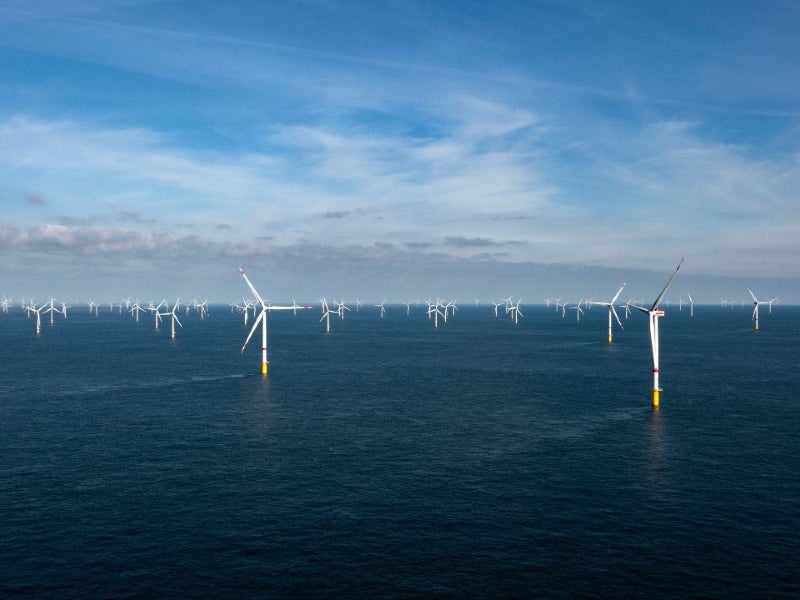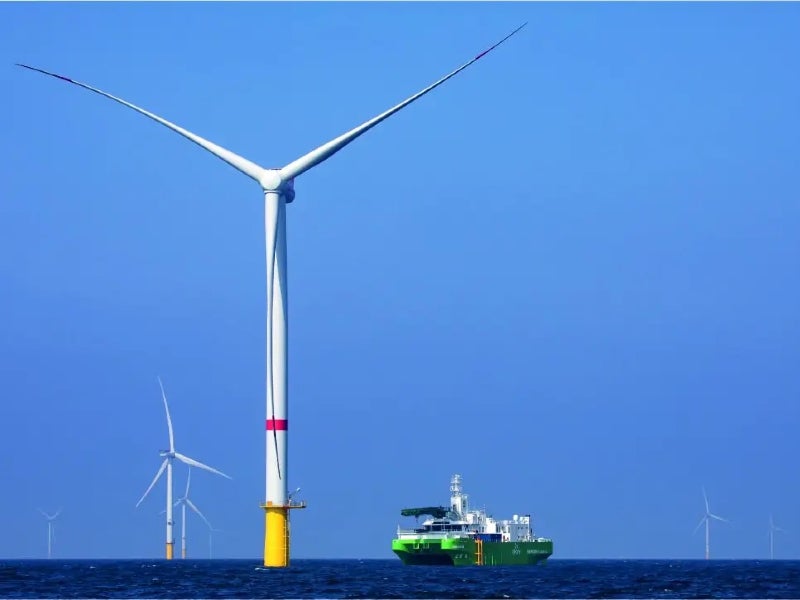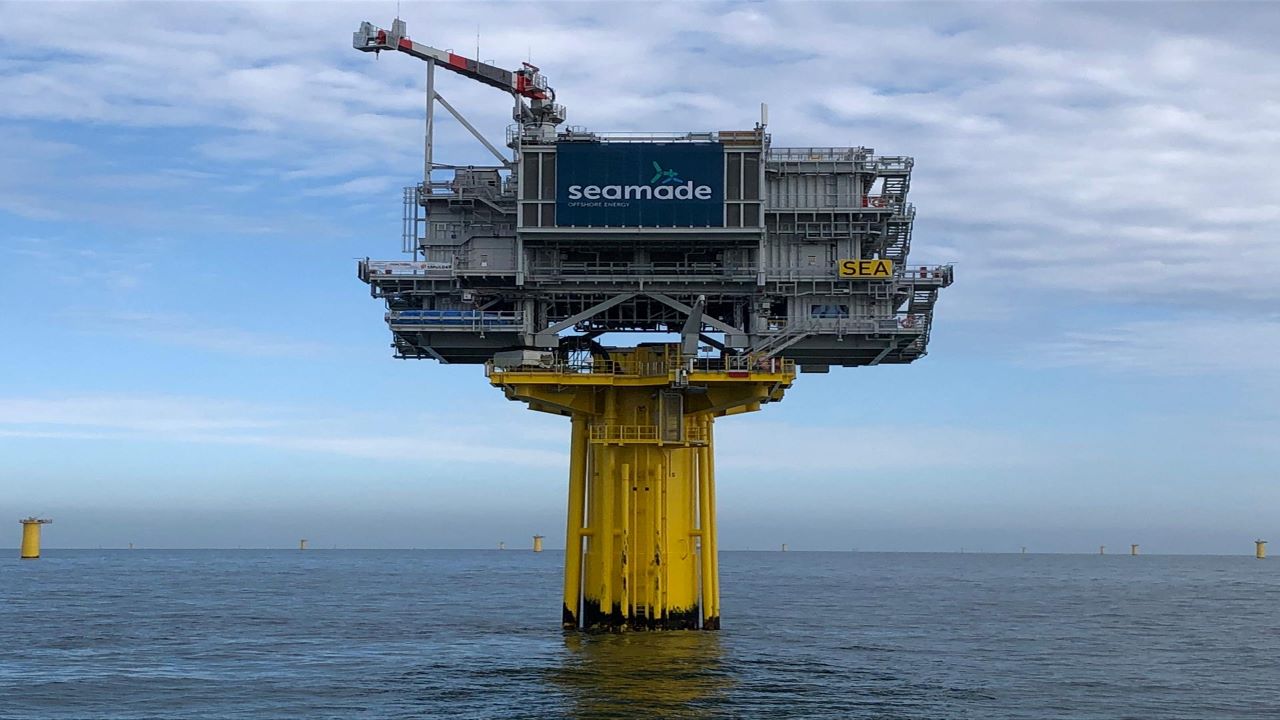The 487MW SeaMade offshore wind project, the largest offshore wind farm in Belgium, is located in the Belgian Exclusive Economic Zone in the North Sea.
SeaMade was developed as a combination of the 235MW Mermaid offshore wind project and the Seastar offshore project, which has 252MW of capacity.
It is owned and operated by SeaMade, a consortium of Otary (70%), Ocean Winds (17.5%) and Eneco Wind Belgium (12.5%). The project is managed by Otary.
French multinational utility company Engie previously held a 17.5% interest in the wind farm through its Belgian subsidiary Electrabel. Engie partnered with EDP Renewables to create a joint venture called Ocean Winds. The two companies combined their existing offshore wind projects and new projects under development into Ocean Winds.
With a potential annual capacity of 1.8TWh, the wind farm can generate enough renewable energy to power 500,000 Belgian households while offsetting 700,000t of carbon dioxide (CO₂) emissions a year.
The project achieved financial closure in December 2018. Offshore construction began in September 2019, followed by the installation of the two substations in March 2020 and turbine installation in June 2020.
The wind project reached the final stage of construction when its last turbine was installed in November 2020. The project was inaugurated in October 2021.
SeaMade offshore wind farm location
The 235MW Mermaid site is located 54km off the coast of Belgium, at a water depth of around 40m. The 252MW Seastar site is located 40km away from the shore at a depth of 38m.
The Mermaid site is located next to the Northwester II wind farm, while the Seastar site is located between the Nobelwind and Northwind wind farms.
Situated 50km away from the project, the Otary logistical hub in the port of Ostend supports the operations and maintenance of the wind farm.
Turbine details
The wind farm features 58 SG 8.0-167DD 8.4MW wind turbines from Siemens Gamesa Renewable Energy. The Mermaid site features 28 turbines, while the remaining 30 were installed at the Seastar site.
Each turbine has a rotor diameter of 167m, a hub height of 109m, a blade tip height of 193m, and a swept area of 21,900m².
The turbines were installed on monopile foundations using DEME’s DP2 offshore installation vessel, Apollo. The foundations were installed with a transition piece to house wind turbine generators (WTGs).
Power transmission from SeaMade offshore wind farm
Inter-array cables laid in looped string formation connect the WTGs to two substations. Each substation is linked to the grid through high-voltage cross-linked polyethylene (XLPE) 800mm² aluminium submarine cables rated at up to 245kV.
The export cables have a diameter of 247mm and weigh around 96.4kg/m.
The wind farm can generate enough renewable energy to power 500,000 Belgian households while offsetting 700,000t of carbon dioxide emissions a year.
The offshore substations increase the voltage from 33kV to 220kV before feeding the modular offshore grid, which is operated by Elia Systems.
Offtake agreement
In January 2022, Eneco signed a ten-year power purchase agreement with multinational chemicals company Ineos for the offtake of wind power from the SeaMade project. Ineos will receive 65.5MW (250GWh a year) of wind power under the offtake agreement.
Financing for the SeaMade offshore wind farm
The SeaMade offshore wind farm was developed at an estimated cost of €1.3bn ($1.4bn). The European Investment Bank (EIB) provided a credit line of €250m ($282m) through the European Fund for Strategic Investments.
The project was funded by a syndicate of lenders consisting of EIB, Danish export credit agency EKF, Santander, Société Générale, Siemens Bank, Bank of China, MUFG, Belfius, KfW IPEX, BNP Paribas, ASN Bank, ING, Commerzbank, Rabobank, SMTB, and Triodos.
Contractors involved in the project
Siemens Gamesa Renewable Energy was awarded a contract to supply wind turbines for the project in December 2018. The contract also includes a 17-year service agreement.
In December 2018, Tideway-Hellenic Cables consortium received a $50m turnkey contract to deliver and install submarine export cables for the offshore wind farm. The cables were produced by Hellenic Cables and installed by Tideway.
Dredging International was contracted to engineer, construct and install the project’s turbine foundations and inter-array cables. A consortium of ENGIE Fabricom, Tractebel, Smulders and GeoSea was responsible for the engineering, procurement, construction and installation (EPCI), as well as commissioning the two high-voltage substations and their respective substructures.
ENGIE Fabricom was responsible for the overall design coordination and integration of all the systems of the substations at the construction yard in Hoboken, Belgium.
Tractebel performed engineering, procurement, testing and commissioning for the high-voltage equipment.
Smulders was engaged for steel constructions for the topside and substructures, such as transition pieces and monopiles. Its work scope included engineering, procurement, fabrication and corrosion protection of the steel constructions.
GeoSea transported and installed the topsides and substructures from onshore to their offshore location.
DEME undertook the EPCI of the turbines, foundations, inter-array and export cables, as well as installing two offshore substations.






